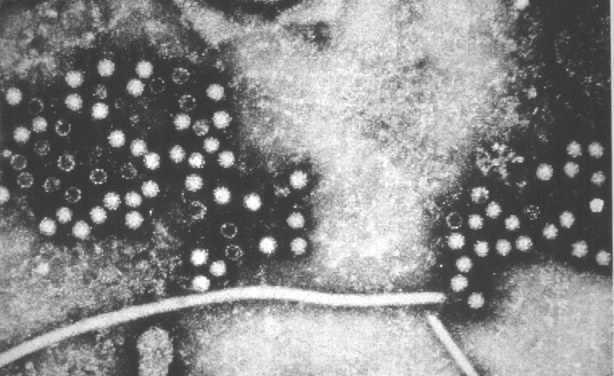
Do you smoke cigarettes? What about marijuana? Many doctors, including myself, routinely ask patients these questions. Over the years, fewer and fewer people say yes. But if you — like me — thought Canada was winning the war on smoking, look again.
New data suggests young Canadians are turning to waterpipes, also called shisha or hookah — and the fumes they’re inhaling may be even more toxic than cigarettes.
Traditionally, hookah smokers use harsh flavourless tobacco, but flavours like fruit, chocolate and even bubble gum are now popular.
Almost 10 per cent of Ontario students between Grades 7 and 12 smoked a hookah in the last year, according to the 2013 Ontario Drug Use and Health Survey performed by the Centre for Addiction and Mental Health (CAMH). That’s one and a half per cent more than reported cigarette use in this age group.
A similar trend is occurring across the country. According to a study published in Preventing Chronic Disease in May, researchers from the University of Waterloo found that the number of Grade 9 to 12 students in Canada reporting ever using a hookah increased from 9.5 per cent in 2006 to 10.1 per cent in 2010, while cigarette use declined during that time.
Hookah bars in Canada aren’t required to have age restrictions because they serve tobacco-free herbal hookah — which for the most part, isn’t prohibited by anti-tobacco smoking laws. But hookah smoke can be just as dangerous as cigarette smoke because the charcoal used to heat tobacco in waterpipes emits high levels of carbon monoxide, metals, and cancer-causing chemicals. And that’s now prompting lawmakers across Canada to look at ways to curb the practice.
Alberta passed a law in November that bans hookah smoking in public places altogether. Many Ontario towns and cities like Barrie, Peterborough, Brantford, and Orillia have put similar bylaws in place, despite no province-wide action. Toronto alone has more than 80 hookah bars.
Hookah originated in the Middle East and India in the 16th century. Waterpipes burn charcoal to heat tobacco or herbs, producing smoke. The pipe then bubbles the smoke through water to cool it before inhalation.
Traditionally, hookah smokers use harsh flavourless tobacco. But mixing tobacco with flavours like fruit, chocolate and even bubble gum is now popular. Since smoking tobacco indoors is not allowed in most places in Canada — bars serve herbal hookah instead. “Herbal” tobacco-free hookah uses a mixture of flavours and herbs.
Hookah poses health hazards to smokers and those exposed to second hand smoke, says Roberta Ferrence. (CBC)
Appealing flavours are pulling in users far beyond Arab communities. In fact, the latest Canadian Youth Smoking Survey funded by Health Canada showed that young people of African, Latin American and Asian descent were the most likely to use the pipes.
Because hookah smokers share a pipe, “it’s a great way to spend time with friends,” says Anton Volov, a first-year undergraduate student at York University – adding that “my friends have told me it’s healthier than cigarettes.”Volov smokes hookah at bars twice a week and enjoys trying new flavours each time.
Hookah poses serious potential health hazards to smokers and those exposed to second hand smoke — just like cigarettes, says Dr. Roberta Ferrence, the senior scientific advisor to the Ontario Tobacco Research Unit, a lead research agency funded by the Ontario government. Hookah smokers are at increased risk for heart and lung disease and cancer, she adds.
Herbal hookah’s hazards
The United States Centers for Disease Control and Prevention explains that hookah users may absorb higher concentrations of toxins than cigarette users — because they puff more often, inhale more deeply and smoke for longer periods of time in each session. A typical 1-hour hookah session involves 200 puffs, while an average cigarette is 20 puffs.
Thus far, Alberta is the only province to take action and ban hookah smoking. “The evidence for the hazardous effects of hookah, even herbal hookah, is clear. We have to protect our youth,” says Fred Horne, Alberta’s Minister of Health.
Now, the Ontario Campaign for Action on Tobacco wants the Government of Ontario to bring “tobacco-like” products under existing Smoke-Free legislation, which would make it illegal to serve even herbal hookah in public areas.
Ontario is committed to ensuring tobacco-containing hookah is not smoked in public areas, as already prohibited by law, says David Jensen, spokesperson for the Ontario Ministry of Health and Long Term Care. But Ontario is not planning to outright ban hookah use in public areas — because research showing the harmful effects of herbal hookah is limited and smoking hookah “is a social or cultural activity for some people,” Jensen says.
Michael Perley, the director of the Ontario Campaign for Action on Tobacco, disagrees. “This is clearly not a cultural activity anymore,” he says. The hazardous health effects of herbal hookah are well known, he adds.
In a study published in Tobacco Control in September, researchers in Alberta found that smoke from herbal hookah contained levels of toxic substances equal to or in excess of cigarette smoke. Ferrence performed a similar study published in Tobacco Control in September that examined the air quality of 12 hookah bars in Toronto — where only herbal hookah was allowed. The air contained much higher levels of cancer-causing particulate matter and carbon monoxide than those found in smoking rooms of bars.
They also found high air nicotine levels in most of these hookah bars, suggesting hookah with tobacco was still being served. Many bars claim they serve herbal hookah to get around tobacco-free legislation — but we know this isn’t true, Perley says. But it doesn’t matter whether hookah contains tobacco or is herbal — the health risks are still there, Ferrence says.
Donald Martin, a consultant lobbyist with Safe Shisha — a group that promotes safe and responsible hookah use on behalf of bar owners in Alberta — argues against banning hookah. Instead, he wants hookah bar regulations like age restrictions, special licenses, and ventilation standards. “Anybody can just set up shop, why not introduce some regulations to ensure hookah is smoked safely,” Martin says. “How is this different than licensing alcohol?” he asks.
Simply regulating hookah bars would leave Canada behind Lebanon, Turkey, and parts of Saudi Arabia and India — where governments have banned the indoor smoking of hookah, Perley says. “Even countries where hookah is traditionally used are banning it,” he says.
People need to know how harmful hookah can be, Ferrence says. In Beijing, people are told to stay in their homes when particulate matter levels in the air due to smog exceed 500 micrograms per cubic meter. “We consistently measured levels of 1500 in hookah bars, that’s three times the amount,” she says. “In one bar, levels were as high as 17,000,” she adds.
Source: CBC news




















